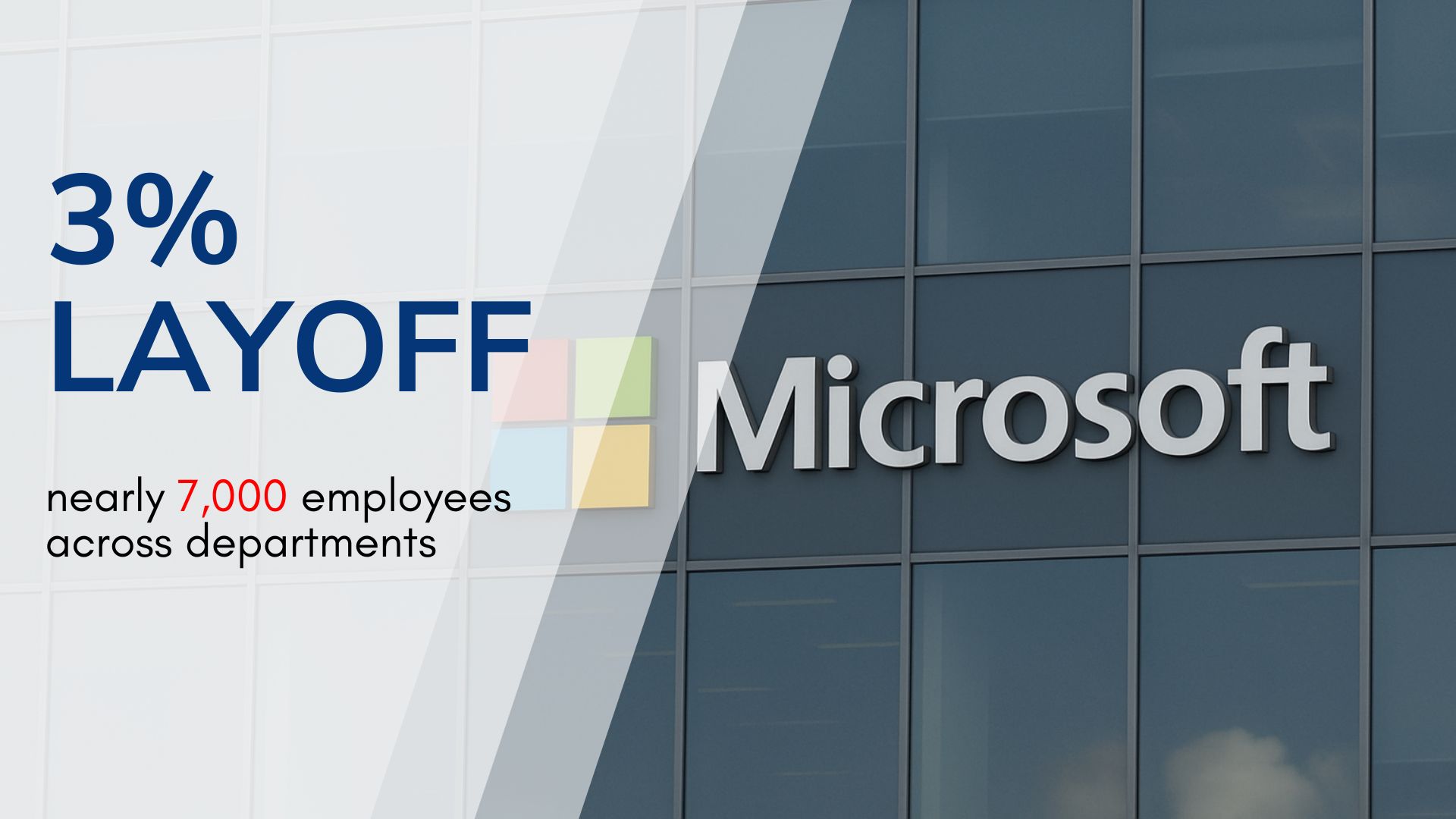In a significant move that has caught the attention of the global tech community, Microsoft recently announced a layoff affecting approximately 3% of its workforce. This translates to nearly 7,000 employees across departments, levels, and locations. While such news can feel sudden and unsettling, there’s more to the story than just numbers.
If you're wondering why a company as successful and profitable as Microsoft would take this step, this article breaks it down for you. We’ll also look at what it could mean for the future of work and innovation at one of the world’s leading tech giants.
Why Did Microsoft Lay Off 3% of Its Workforce?
Despite reporting strong financial results in its recent earnings report, Microsoft is shifting gears strategically. The company is making major investments in artificial intelligence and infrastructure, leading to shifts in how it manages and allocates its internal resources. According to sources close to the matter, this decision is aimed at "flattening management layers" and increasing organizational efficiency.
In simpler terms, Microsoft is trying to become leaner and more focused as it doubles down on its AI strategy. With competition heating up in the AI space and new innovations constantly emerging, Microsoft appears to be prioritizing speed, adaptability, and future-ready operations.
Which Teams Were Affected?
Unlike targeted layoffs in the past, this round of job cuts impacted a broad range of teams. From engineering to human resources, and even senior leadership, no division was completely untouched. Interestingly, some high-profile roles, including Microsoft's Director of AI, Gabriela de Queiroz, were also included in the layoff.
LinkedIn, which is owned by Microsoft, also saw a share of these cuts, reinforcing the wide-reaching nature of the restructuring
Financial Strength vs. Workforce Reduction
You might be thinking: Why lay off employees when the company is doing well financially?
It’s a fair question. Microsoft reported quarterly revenues of over $70 billion, surpassing market expectations. However, as the company positions itself for the future, especially with plans to invest over $80 billion in AI infrastructure in the upcoming fiscal year, it’s taking a hard look at where and how it spends its money.
This isn't about cutting costs due to losses. It’s about reshaping the workforce to align with new priorities. In many ways, this is Microsoft betting big on the future of AI and making sure it’s ready to lead the way.
What This Means for the Tech Industry
Microsoft’s decision could set a precedent for other tech giants. As the industry leans more into AI and automation, we might see more companies reevaluate their internal structures. Efficiency, innovation, and agility are becoming the new benchmarks for success.
At the same time, this news is a reminder that even high-performing companies are not immune to workforce changes. For tech professionals, it underscores the need to keep learning and stay current with evolving technologies such as machine learning, data analytics, and cloud computing.
How Laid-Off Employees Are Coping
Layoffs are never easy, but some former Microsoft employees have already started sharing their journeys online. Professionals like Sital Ruparelia have offered advice to others on how to bounce back — from staying active and healthy to networking and exploring new career paths.
The tech world remains highly dynamic, and those affected have access to a strong support network, job boards, and communities that specialize in tech roles. Companies across sectors are also actively hiring skilled tech professionals, especially those with experience at major firms like Microsoft.
Microsoft’s Commitment to Growth
While layoffs can cast a shadow, they don’t necessarily reflect long-term decline. Microsoft is still hiring in key areas, especially those related to AI, cloud services, and cybersecurity. The company remains one of the most influential players in the industry and continues to lead initiatives in AI through partnerships, product launches, and infrastructure development.
This restructuring could be a short-term shake-up leading to long-term gains — both for the company and the evolving tech landscape.
Microsoft’s decision to lay off 3% of its global workforce is a major development, but it’s rooted in a strategic vision for the future. As the company pivots to strengthen its AI capabilities and improve operational efficiency, it is reshaping itself for a new era of innovation.
For tech professionals and business owners alike, this is a signal to pay attention to emerging trends and be ready to adapt. Change is the only constant in tech, and Microsoft is proving that even the biggest players must evolve to stay ahead.

